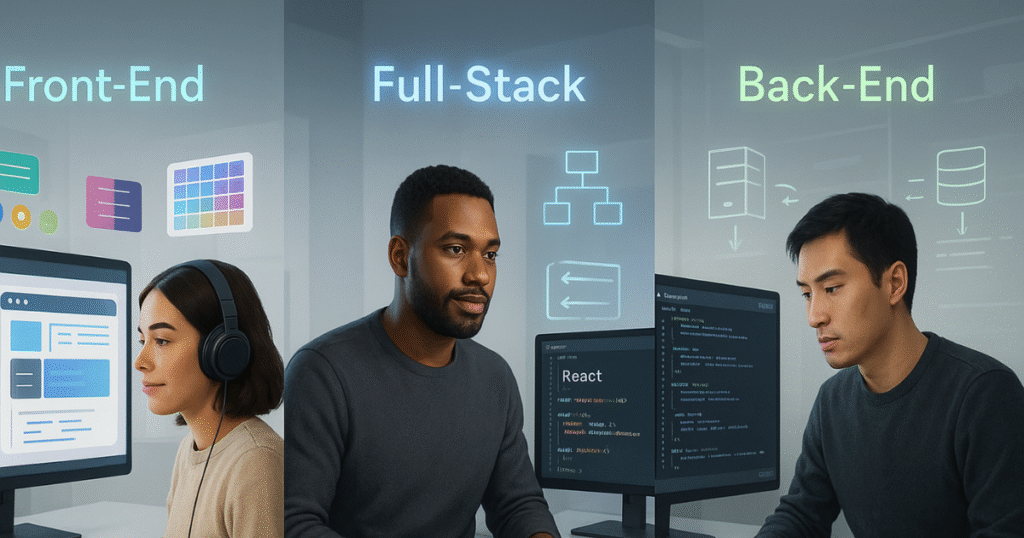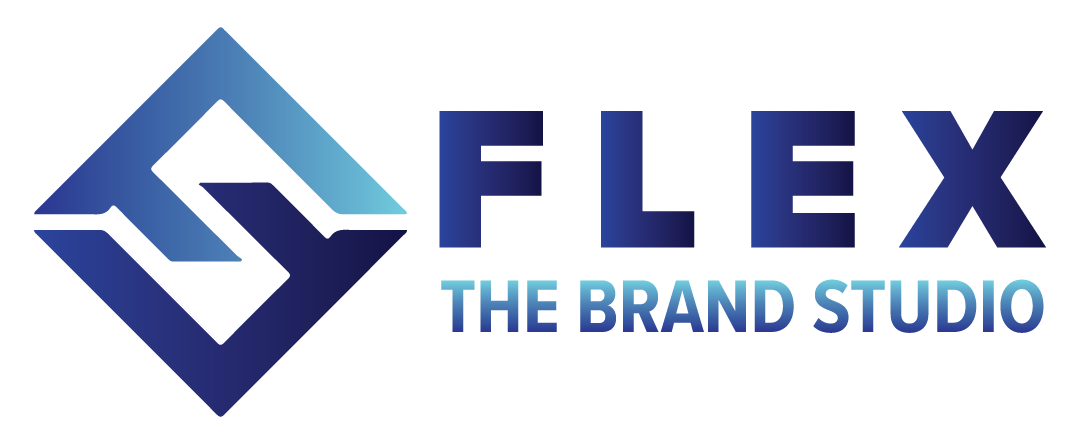Exclusive digital marketing services, 100% Satisfaction, and Money Back Guarantee! Learn More
In today’s tech-driven world, understanding the difference between front-end, back-end, and full-stack developers is essential for anyone interested in web application development or pursuing a career in software engineering. These distinct development roles each play a critical part in building modern websites and applications, and knowing how they fit together can clarify your path in the vast landscape of web development career paths.
What is a Front-End Developer?
A front-end developer focuses on the user-facing side of a website or application, the part that users see and interact with. Mastery of frontend development skills is key, including fluency in HTML, CSS, and JavaScript, which form the building blocks for structuring content, styling pages, and adding interactivity. Front-end developers must also incorporate UI/UX design principles to ensure that the interface is intuitive, visually appealing, and user-friendly.
Key responsibilities often include creating responsive designs that adapt to various devices and ensuring cross-browser compatibility for a consistent experience across platforms. Popular tools and frameworks they use include:
- React
- Angular
- Vue.js
- Bootstrap
These tools help streamline the development process and enhance user engagement.
What is a Back-End Developer?
A back-end developer works behind the scenes, managing the data, server, and application logic that power the user interface. They specialize in backend programming languages like Python, PHP, Node.js, and Java. Their main tasks revolve around server-side logic, handling user authentication, and managing data storage and security through databases.
For example, when a user logs in, the back-end developer ensures the system:
- Receives the login request
- Queries the database management system (such as PostgreSQL, MongoDB, or MySQL) for user data
- Authenticates credentials
- Sends back a secure response
This workflow is crucial for maintaining application integrity and smooth performance.
What is a Full-Stack Developer?
A full-stack developer combines the skills of both front-end and back-end development to manage end-to-end development of web applications. Their versatile role involves building user interfaces, designing server-side logic, integrating RESTful APIs, and handling data management. Full-stack developers often take on additional responsibilities like DevOps and version control (Git) to ensure seamless deployment and collaboration.
This hybrid skill set is highly sought after, especially in startups and agile environments, where developers need to wear multiple hats and accelerate product development.
Client-Side vs Server-Side: The Technical Breakdown

Understanding the client-side vs server-side distinction clarifies the technical division of labor in web development:
Aspect | Client-Side | Server-Side |
Execution | In the user’s browser | On the web server |
Responsibilities | UI rendering, interactivity | Data processing, business logic |
Technologies Used | HTML, CSS, JavaScript | Python, Node.js, PHP, Java |
Performance Impact | Affects user experience directly | Affects response time and security |
Client-side code handles the rendering and immediate interaction, while server-side code manages requests and optimizes server response time.
Choosing the Right Tech Stack and Career Pathway
Selecting the appropriate tech stack examples is a crucial step for aspiring developers. Popular stacks like MEAN (MongoDB, Express.js, Angular, Node.js), MERN (React instead of Angular), and LAMP (Linux, Apache, MySQL, PHP) each offer unique advantages depending on your goals.
For those considering a career switch to tech, enrolling in a coding bootcamp for web developers can provide an accelerated, hands-on learning experience. These programs often include a structured learning roadmap and practical projects that mirror industry needs. Depending on your stack and scope, companies often require professionals who can offer custom website development services tailored to specific business goals.
Conclusion
Choosing between front-end, back-end, or full-stack roles depends largely on your interests and the web development career paths you wish to pursue. Understanding the scope of full-stack developer responsibilities can help you decide if this hybrid path suits your goals. If you’re looking to hire the right talent or team, consider our comprehensive website development services to bring your project vision to life.


